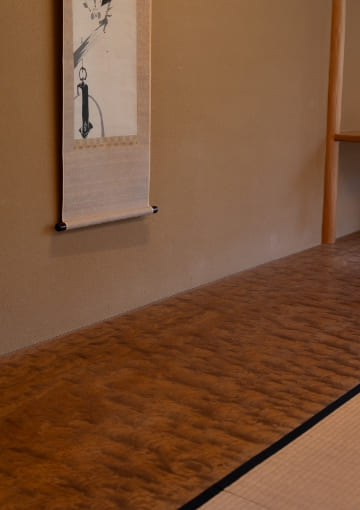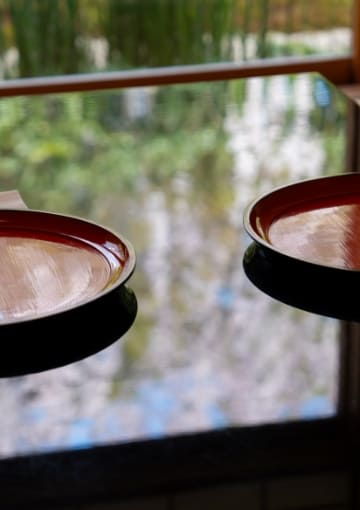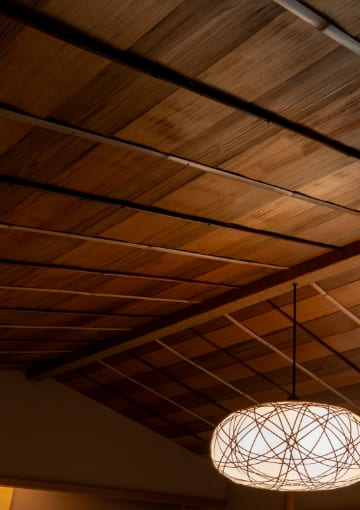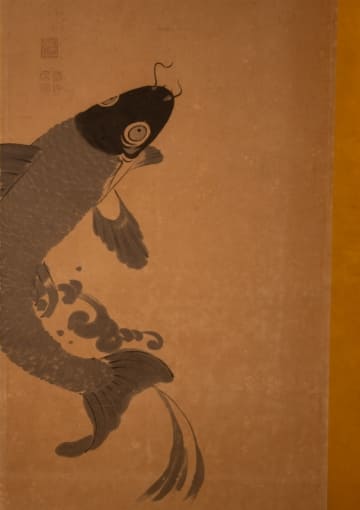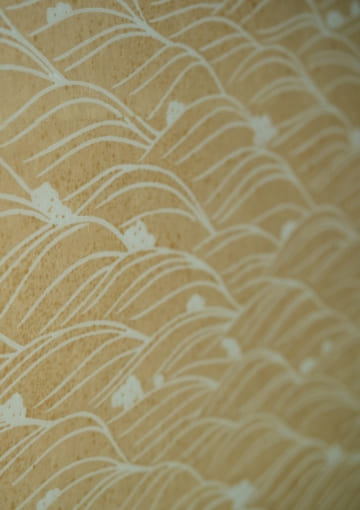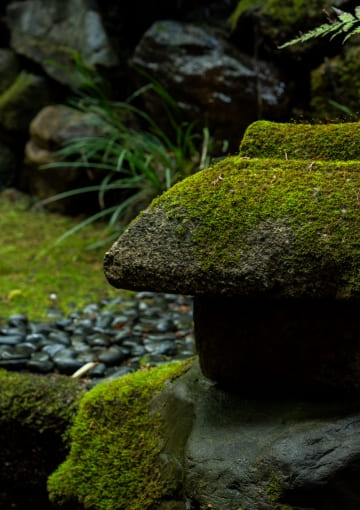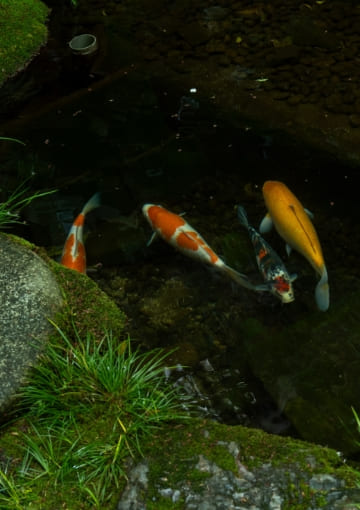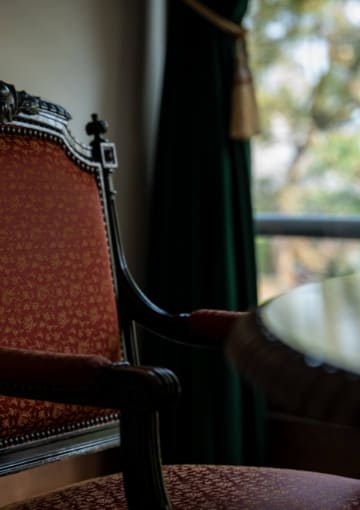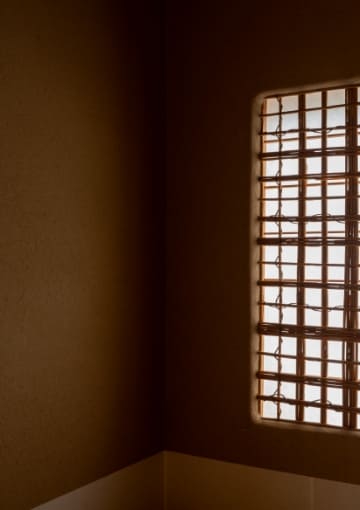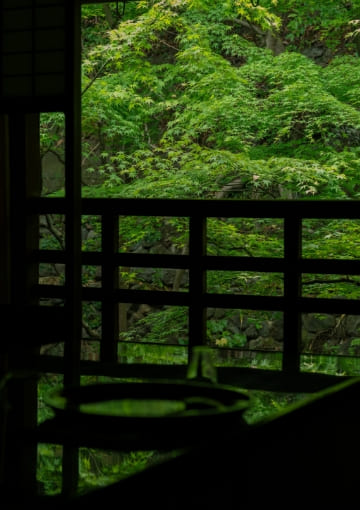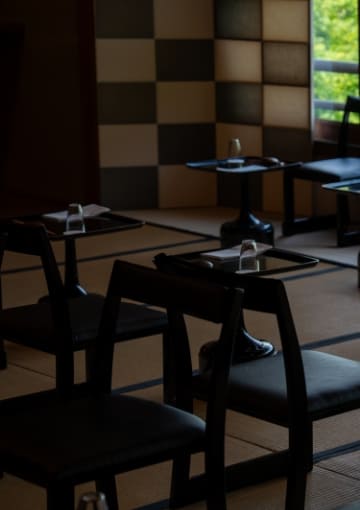芙蓉の間 FUYONOMA 1
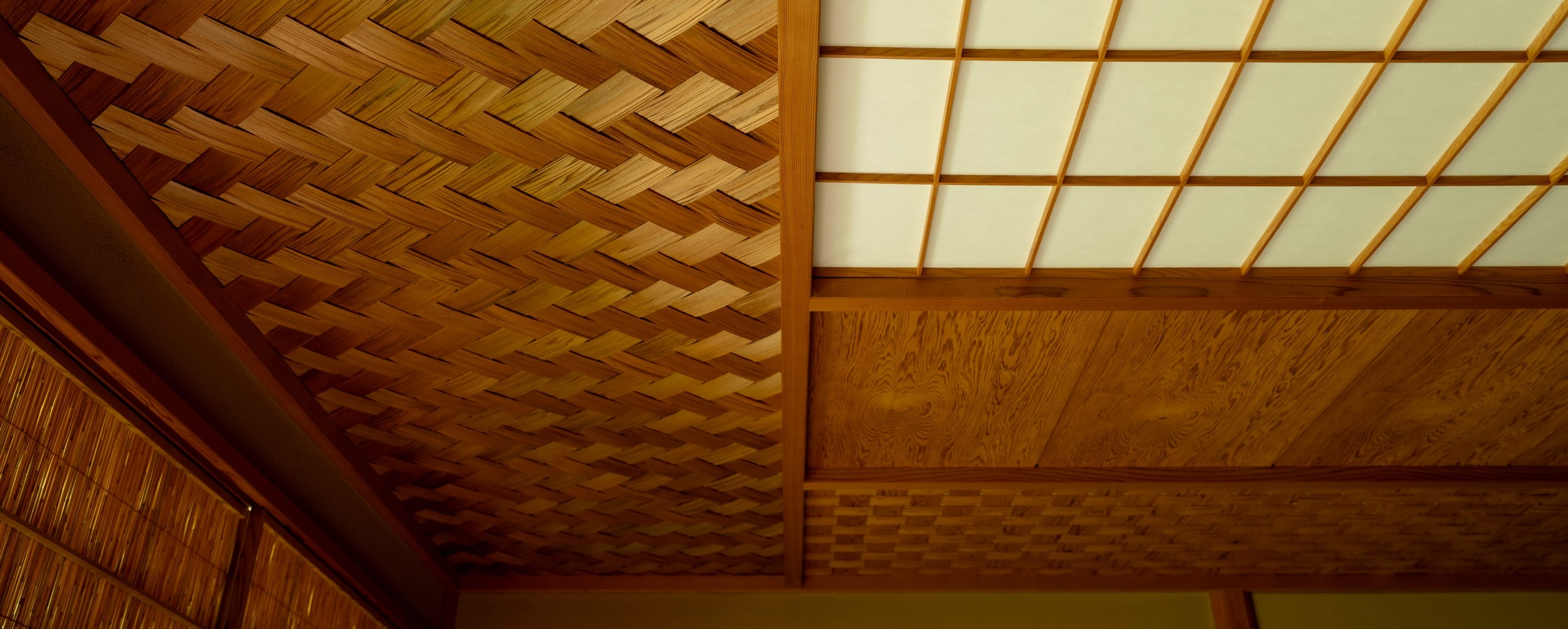
木肌と直線美が映える、
数寄屋造りの現代形。
安土桃山時代に茶の湯文化の隆盛とともに生まれた数寄屋造りは、格式ばった装飾を排し、自然との調和を旨としています。芙蓉の間は、床の間に長さ3間半=約6.3mもの栃の一枚板を用い、柱に北山杉、床柱に赤松、天井に黒部杉や霧島杉を使用。木の質感を生かした直線的でモダンな意匠は、現代の数寄屋建築において日本随一と言われる中村外二工務店の手によるものです。
A modern take on the traditional Japanese sukiya-zukuri architecture, highlighting the beauty of wood grain and straight lines
Sukiya-zukuri architecture, which emerged during the Azuchi-Momoyama period (1568 to 1600) alongside the flourishing of tea ceremony culture, is characterized by its rejection of ornate formality in favor of harmony with nature. The Fuyo-no-ma (literally the ‘cotton rose room’) features a single plank of tochi (Japanese horse chestnut) spanning approximately 3.5 ken (6.3 meters) across the floor of the alcove, with Kitayama cedar for the pillars, red pine for the alcove post, and ceilings made of Kurobe and Kirishima cedar. The clean, modern lines that accentuate the natural textures of the wood were crafted by Nakamura Sotoji Komuten, widely regarded as the finest builder of contemporary sukiya-zukuri architecture in Japan.
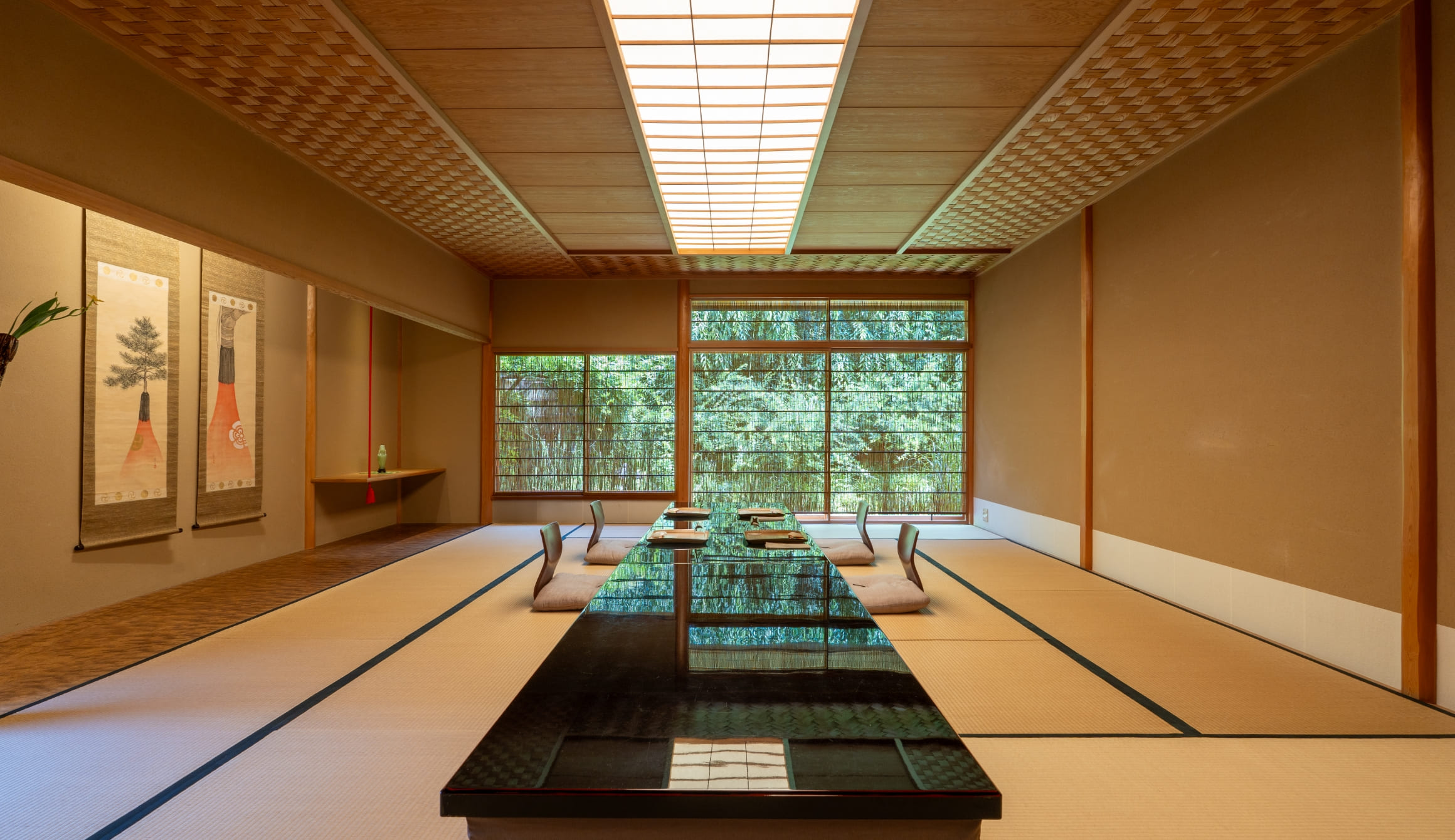
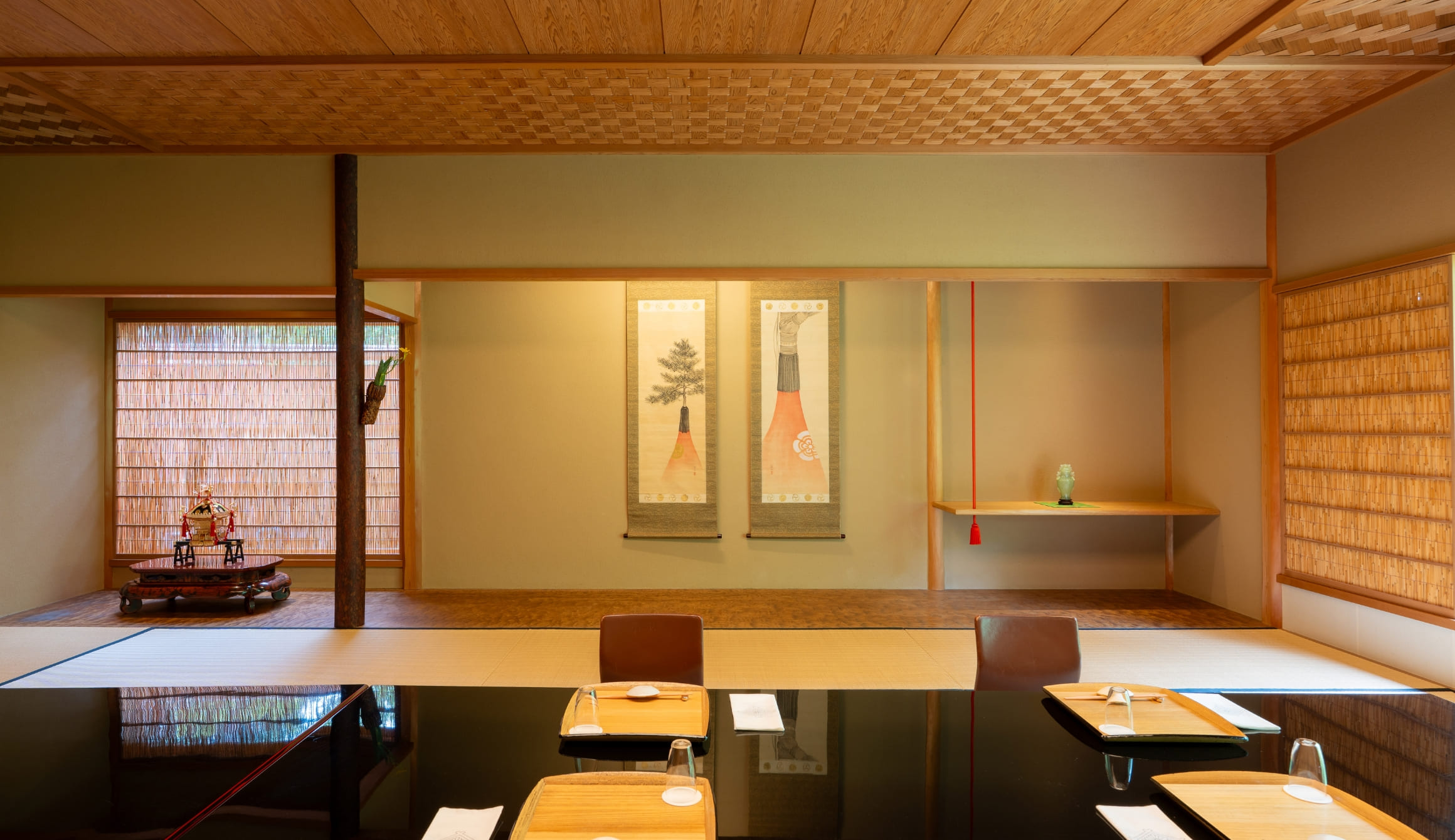
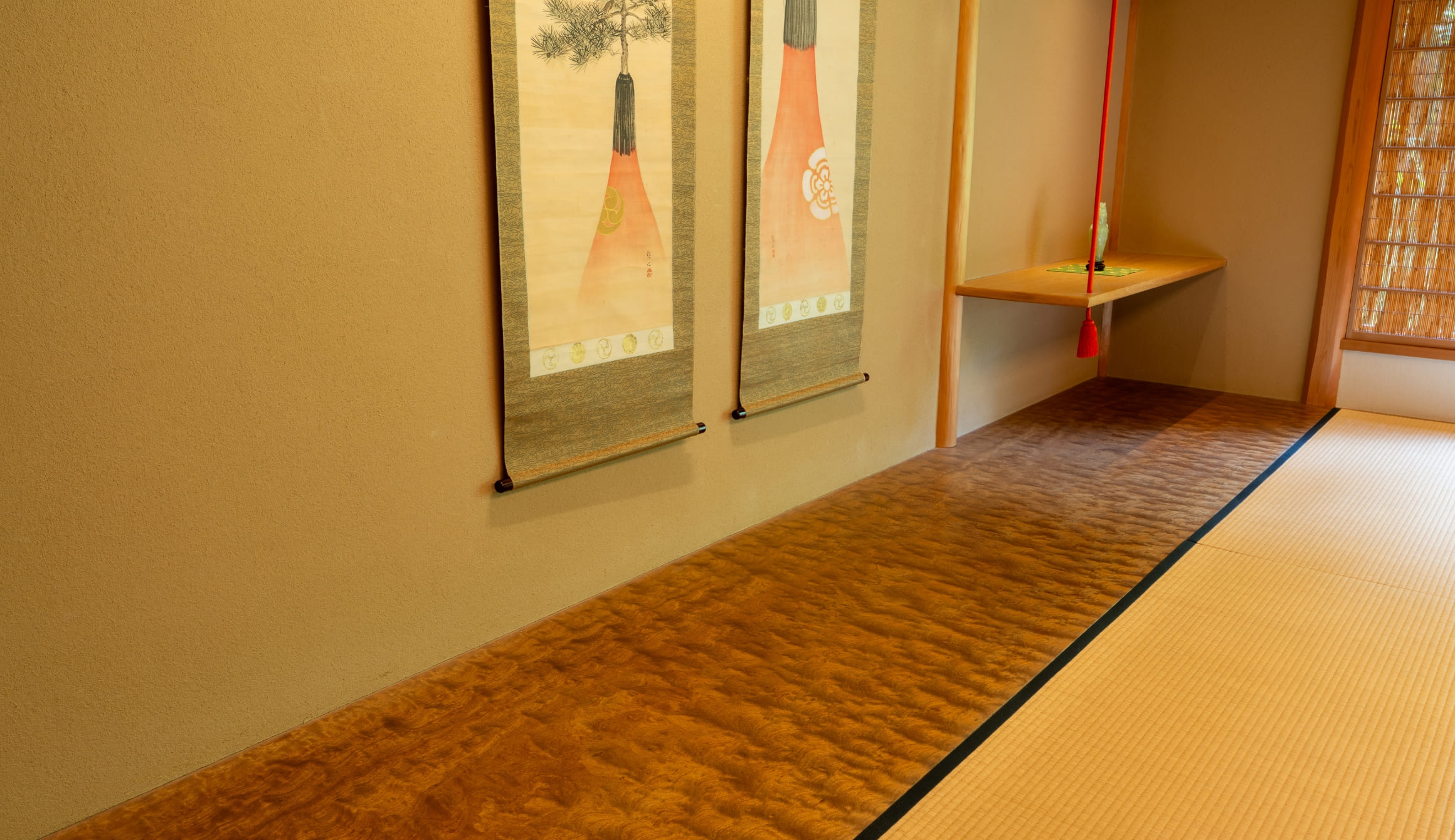
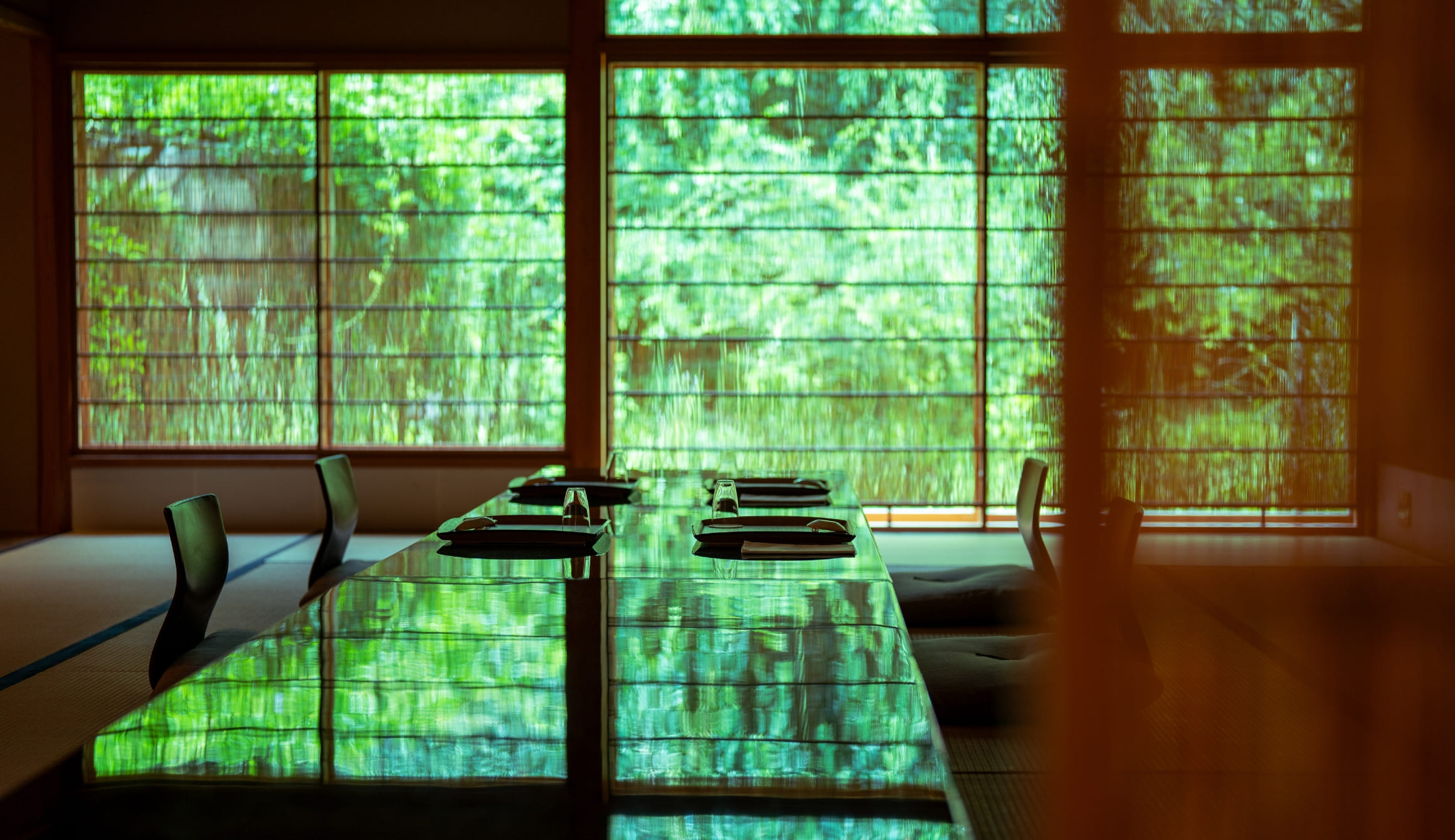
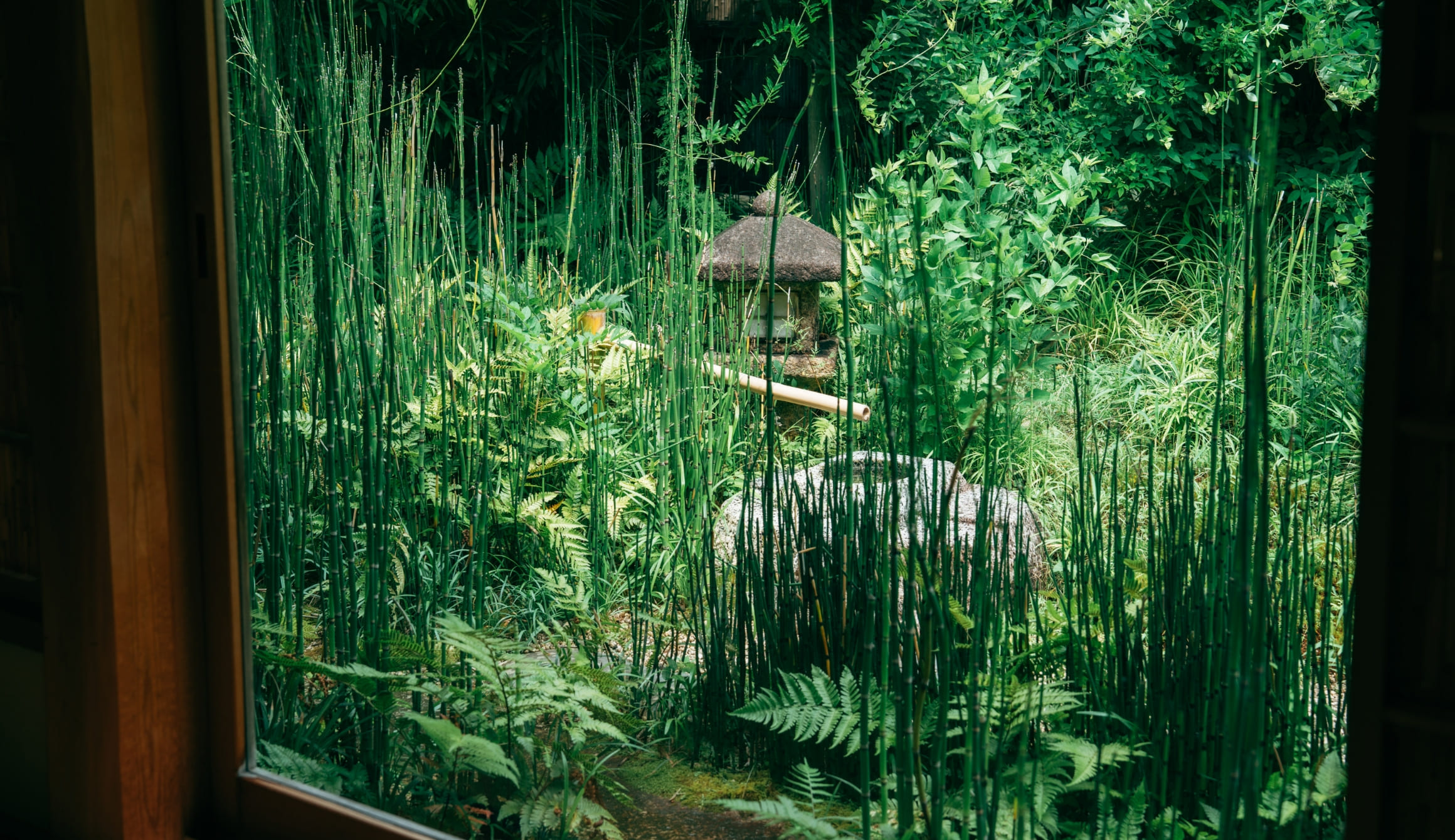
Details
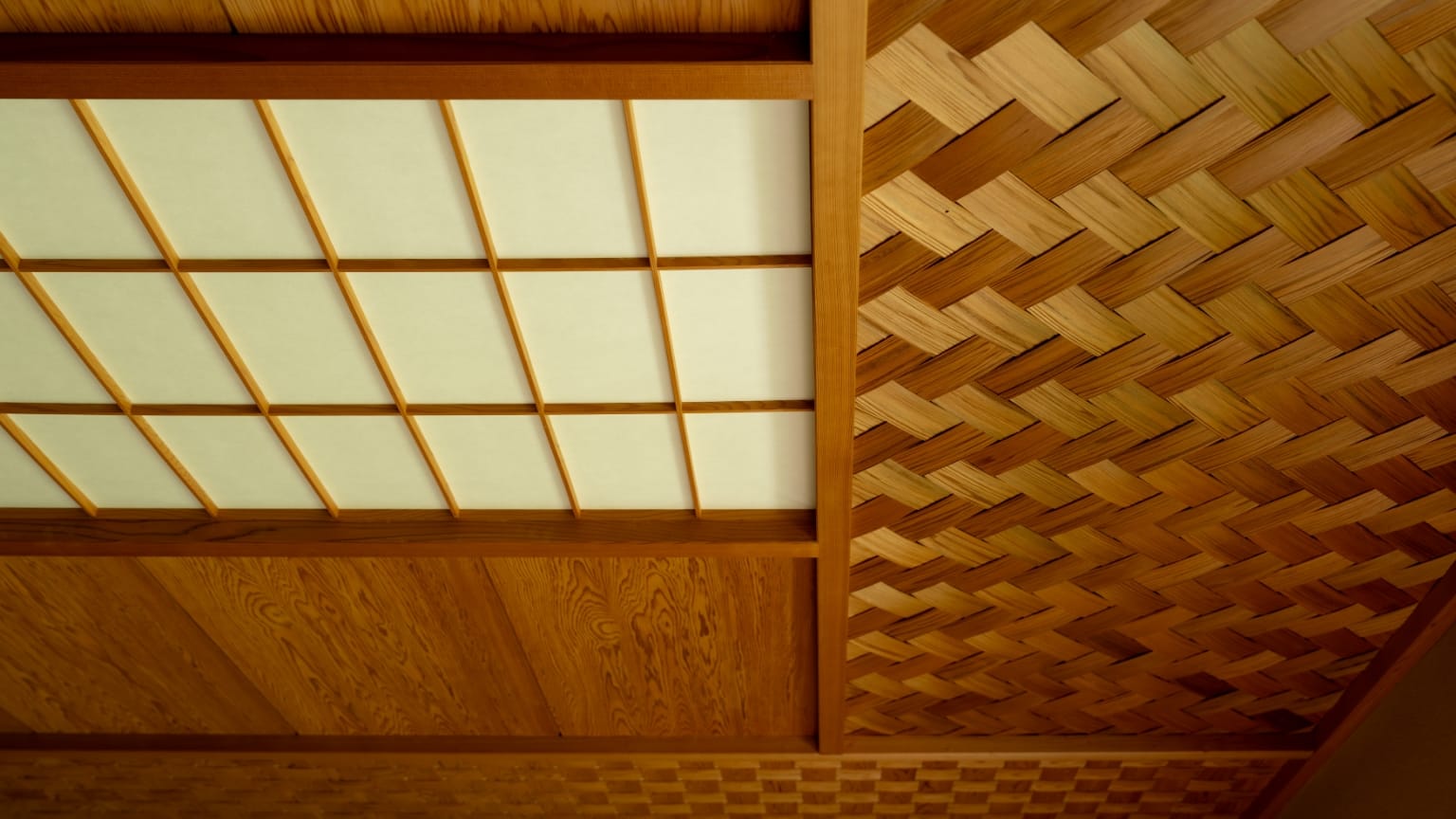
天井は内側に霧島杉、四方はぐるりと矢羽根編みと市松編みの黒部杉が囲みます。
The inner part of the ceiling is made of Kirishima cedar, with Kurobe cedar crafted in both an arrow-tail feather and checkered pattern around the edges.
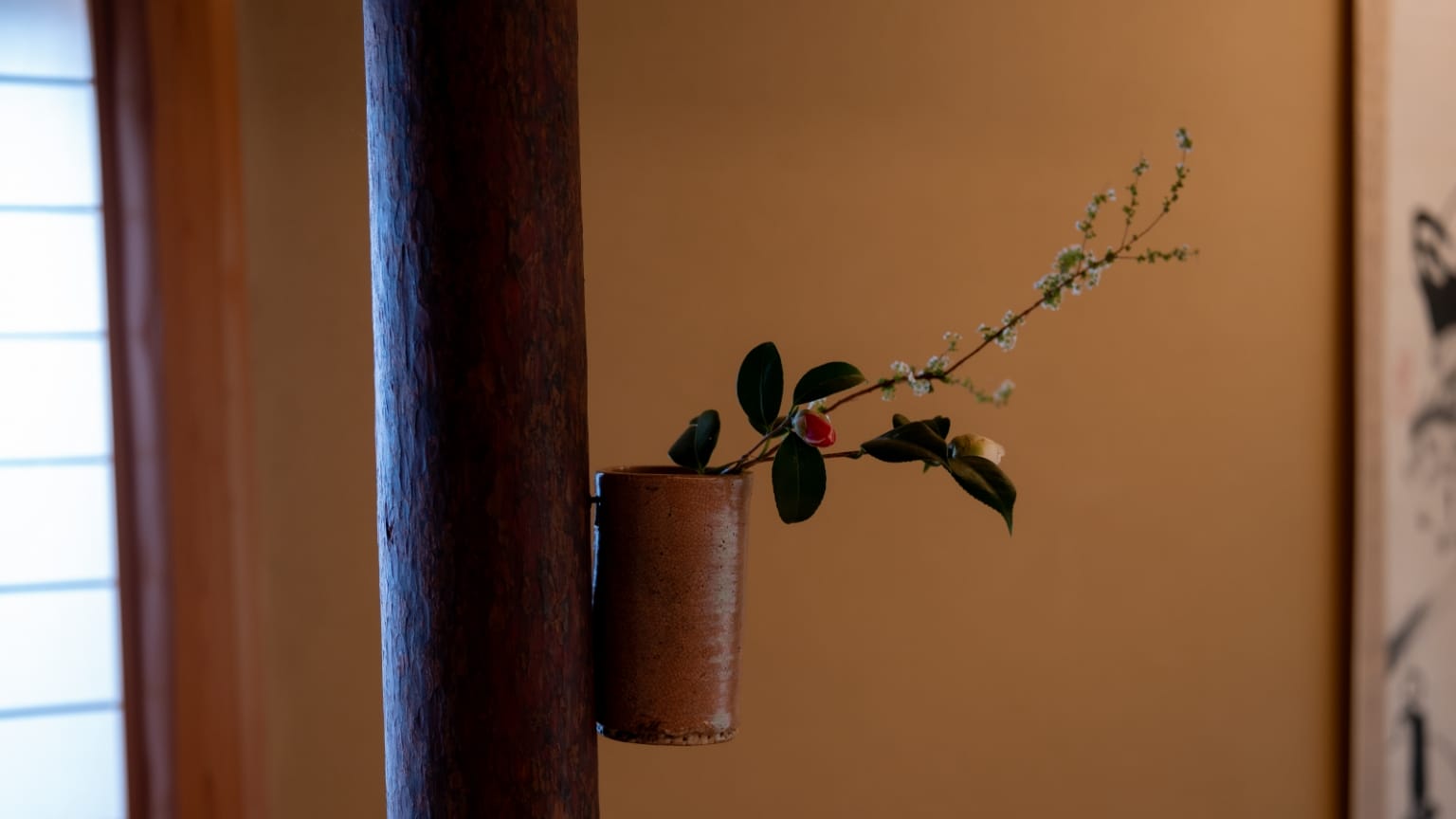
この日の花は、紅白の椿に雪柳。小林東五の花器に女将が生けたものです。
The flowers of the day were red and white camellias and meadowsweet. They were arranged by the proprietress in a vase made by the coveted ceramist, Kobayashi Togo.
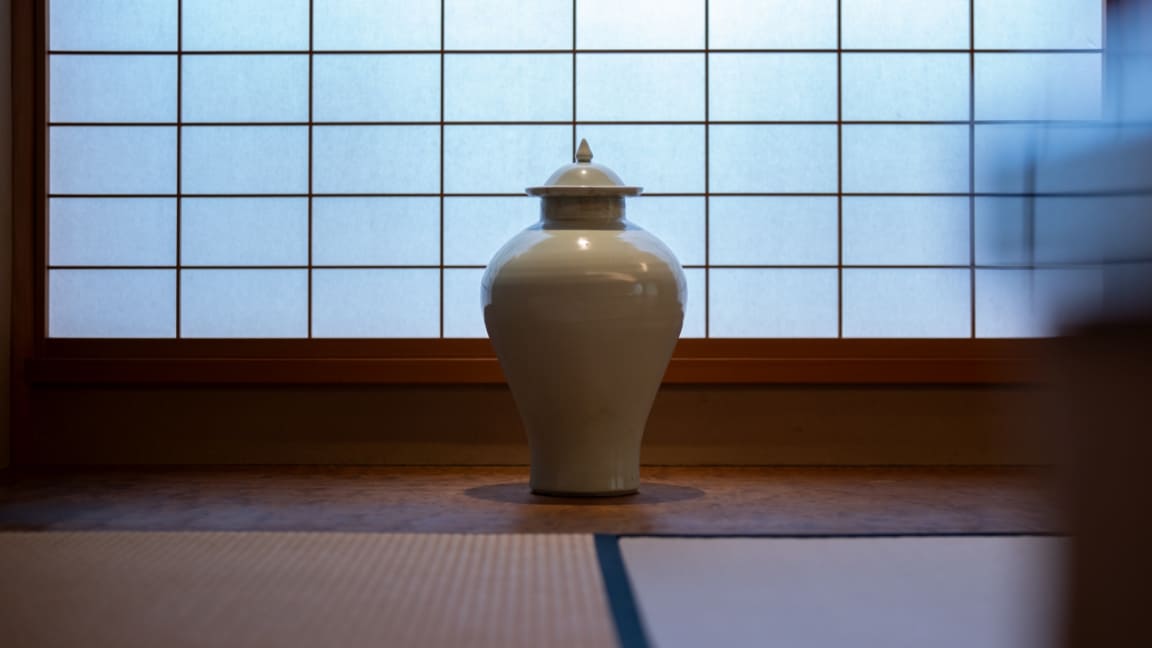
李朝の白磁壺。柔らかな肌合いと曲線をもつ、約450年前の貴重なもの。
A white porcelain vase from the Yi dynasty. With its soft texture and curved lines, this rare piece is from approximately 450 years ago.
